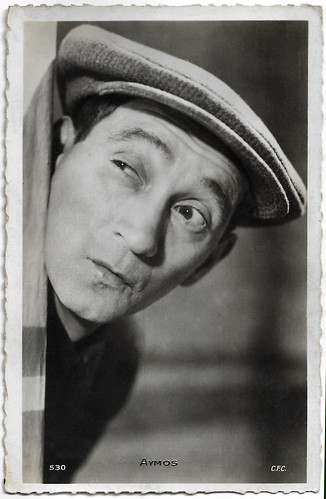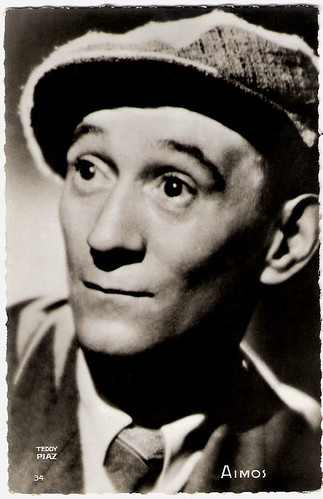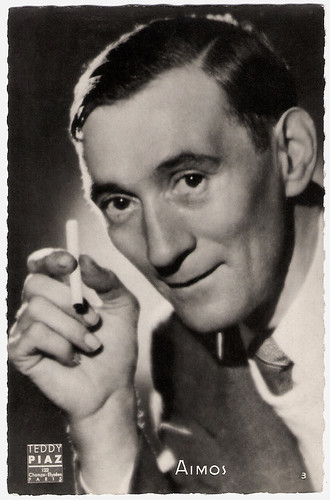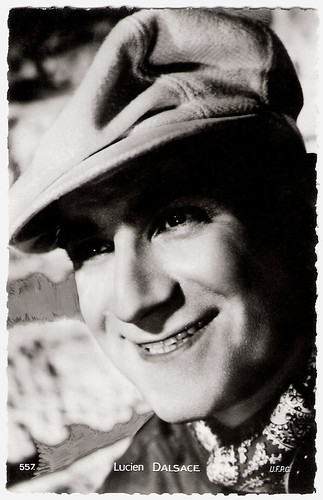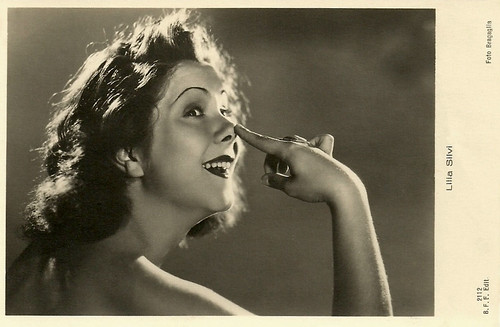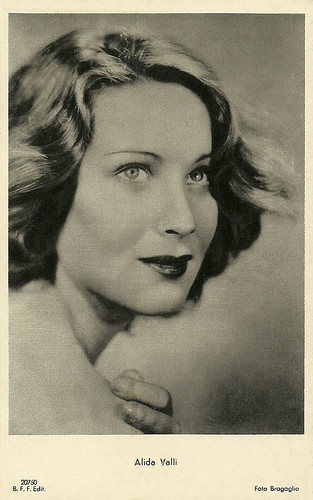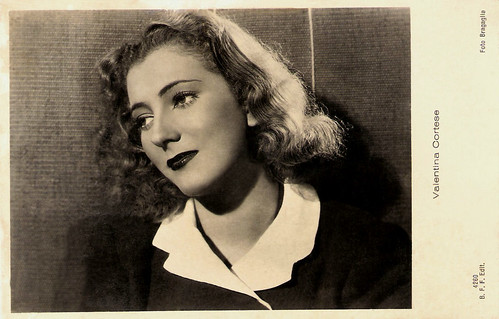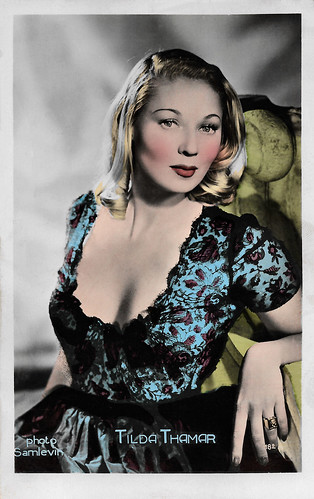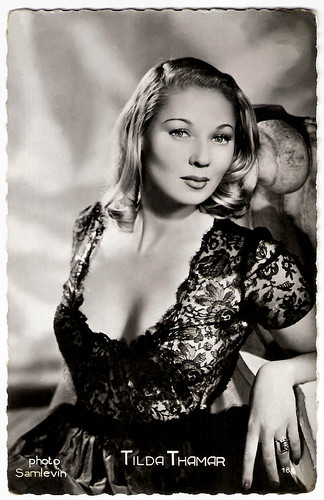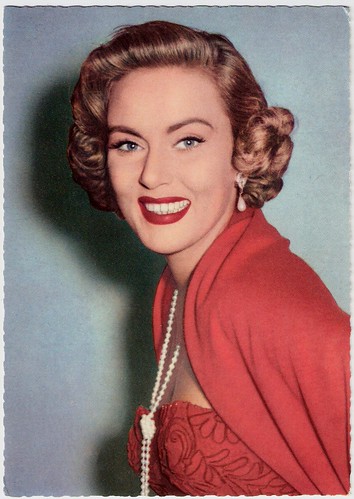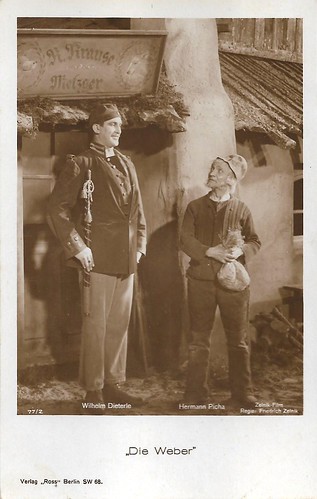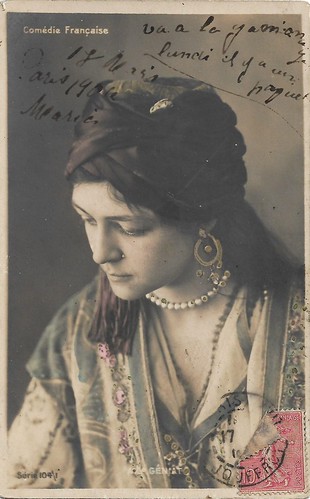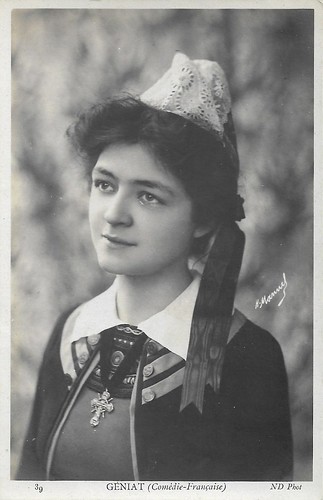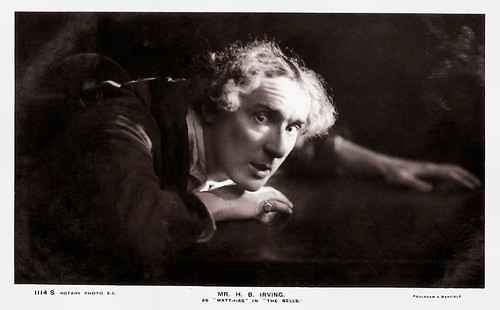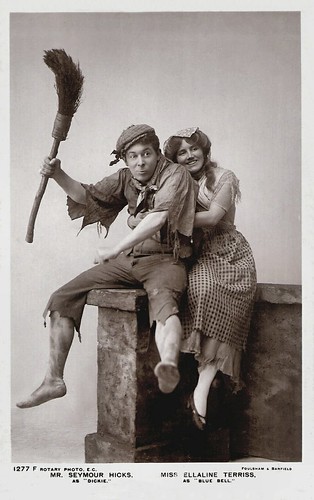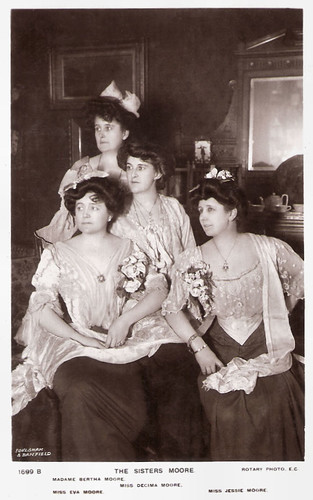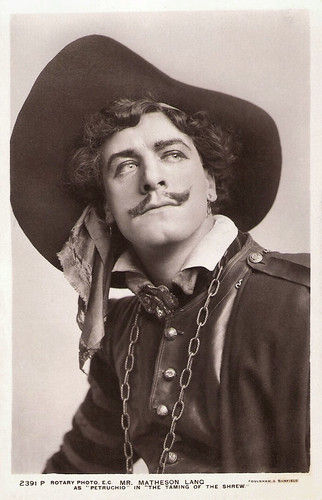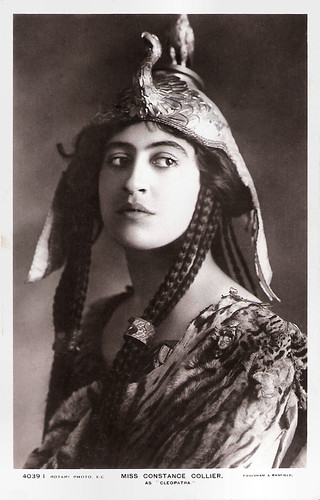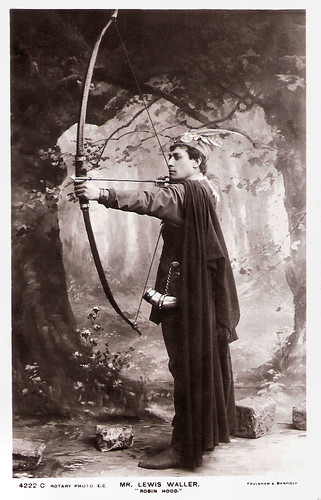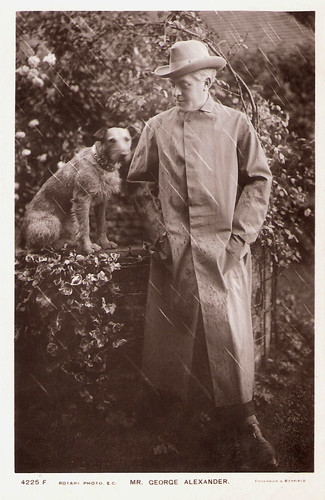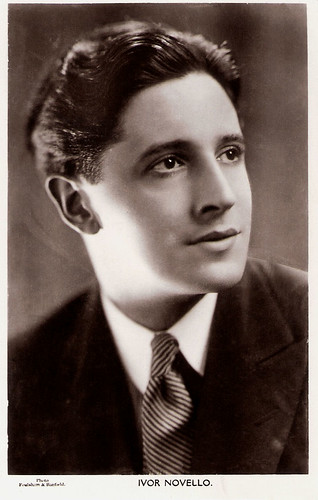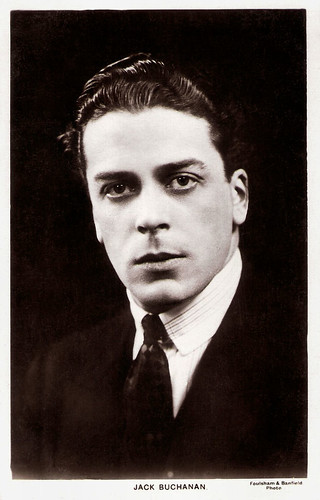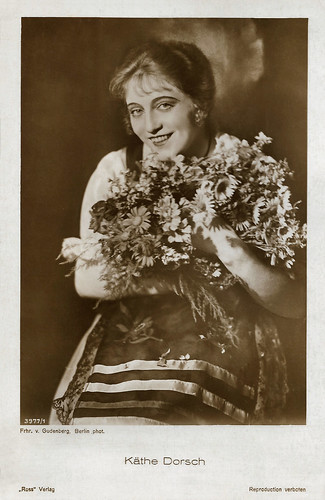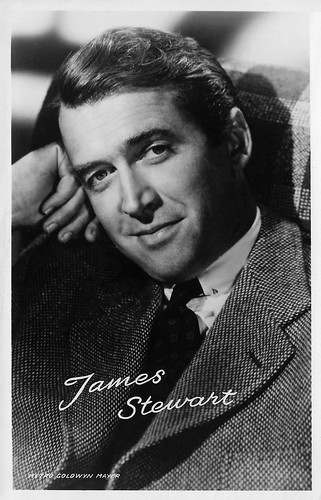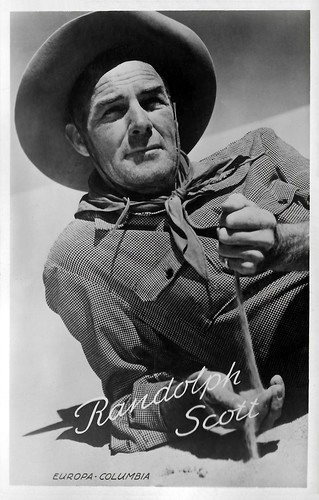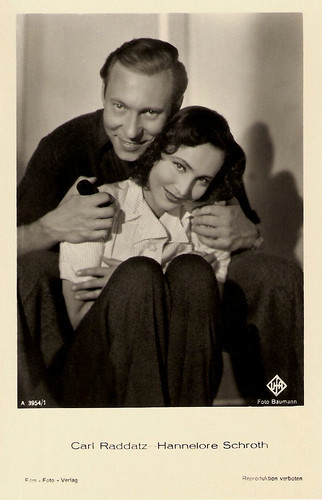American singer and actor Dick Powell (1904-1963) was also a film producer, film director, and studio head. Though he came to stardom as a juvenile lead in the Warner backstage musicals, Powell showed versatility and successfully transformed into a hardboiled leading man in Film Noirs. He was the first actor to portray the private detective Philip Marlowe on screen.
![Dick Powell]()
British Real Photograph postcard, no. 86a. Photo: Warner Bros and Vitaphone Pictures.
![Dick Powell]()
British postcard. Photo: First National Pictures.
![Dick Powell in Murder, My Sweet (1944)]()
British Real Photograph postcard, no. 86.B. Photo: Warner Bros and Vitaphone Pictures. Dick Powell as Philip Marlowe in Murder, My Sweet (Edward Dmytryk, 1944).
Richard Ewing Powell was born in Mountain View, the seat of Stone County in northern Arkansas. Powell was the son of Ewing Powell and Sallie Rowena Thompson. He was one of three brothers. His brothers were Luther and Howard Powell, who ended up as vice president of the Illinois Central Railroad.
The family moved to Little Rock in 1914, where Powell sang in church choirs and with local orchestras and started his own band. Powell attended the former Little Rock College before he started his entertainment career as a singer and banjo player with the Royal Peacock Band. He then got a gig with the Charlie Davis band and toured with them throughout the mid-west, appearing at dance halls and picture theatres.
In 1925, he married Mildred Maund, a model, but she found being married to an entertainer, not to her liking. After a final trip to Cuba together, Mildred moved to Hemphill, Texas, and the couple divorced in 1932.
He recorded a number of records with Davis and on his own, for the Vocalion label in the late 1920s. Powell moved to Pittsburgh, where he found great local success as the Master of Ceremonies at the Enright Theater and the Stanley Theater. In April 1930, Warner Bros. bought Brunswick Records, which at that time owned Vocalion. Warner Bros. was sufficiently impressed by Dick Powell's singing and stage presence to offer him a film contract in 1932.
He made his film debut as a singing bandleader in Blessed Event (Roy Del Ruth, 1932) with Lee Tracy and Mary Brian. He was borrowed by Fox to support Will Rogers in Too Busy to Work (John G. Blystone, 1932). He was a boyish crooner, the sort of role he specialised in for the next few years.
Back at Warners, he supported George Arliss in The King's Vacation (John G. Adolfi, 1933). Then he was the love interest for Ruby Keeler in 42nd Street (Lloyd Bacon, 1933), which was a massive hit. Warner let him repeat the role in Gold Diggers of 1933 (Mervyn LeRoy, 1933), which was another big success.
Looking rather younger than his actual years, Powell soon found himself typecast as clean-cut singing juveniles. Another hit was Footlight Parade (Lloyd Bacon, 1933), with Keeler, Joan Blondell, and James Cagney. Powell was upped to star for College Coach (William A. Wellman, 1933), then went back to more ensemble pieces including Convention City (Archie Mayo, 1933), and Dames (Ray Enright, Busby Berkeley, 1934).
He was top-billed in Gold Diggers of 1935 (Busby Berkeley, 1935), with Joan Blondell. He supported Marion Davies in Page Miss Glory (Mervyn LeRoy, 1935), made for Cosmopolitan Pictures, a production company financed by Davies' lover William Randolph Hearst who released through Warners. Warners gave Dick Powell a change of pace, casting him as Lysander in A Midsummer Night's Dream (William Dieterle, Max Reinhardt, 1935).
He did two films with his then-wife, Joan Blondell, Stage Struck (Busby Berkeley, 1936) and Gold Diggers of 1937 (Lloyd Bacon, 1937). Then 20th Century Fox borrowed him for On the Avenue (Roy Del Ruth, 1937) with Madeleine Carroll. Back at Warners, he appeared in Hard to Get (Ray Enright, 1938) with Olivia de Havilland, and Naughty but Nice (Ray Enright, 1939), starring Ann Sheridan. Fed up with the repetitive nature of his roles, Powell left Warner Bros and went to work for Paramount.
![Dick Powell and Ruby Keeler in 42nd Street (1933)]()
British postcard in the Film Partners Series, London, no. P 114. Photo: Warner. Dick Powell and Ruby Keeler in 42nd Street (Lloyd Bacon, 1933).
![Dick Powell]()
Romanian postcard. Photo: Warner Bros. Dick Powell in Broadway Gondolier (Lloyd Bacon, 1935).
![Dick Powell and Madeleine Carroll in On the Avenue (1937)]()
British Art Photo postcard, no. 160. Photo: Warner Bros. Dick Powell and Madeleine Carroll in On the Avenue (Roy Del Ruth, 1937).
At Paramount, Dick Powell and Joan Blondell were in another musical, I Want a Divorce (Ralph Murphy, 1940). Then Powell got a chance to appear in a non-musical and starred opposite Ellen Drew in the sparkling Preston Sturges comedy Christmas in July (1940). I.S. Mowis at IMDb cites Powell saying: "I knew I wasn't the greatest singer in the world and I saw no reason why an actor should restrict himself to any one particular phase of the business".
Universal borrowed him to support Abbott and Costello in In the Navy (Arthur Lubin, 1941), one of the most popular films of 1941. He was in a fantasy comedy directed by René Clair, It Happened Tomorrow (1944) then went over to MGM to appear opposite Lucille Ball in Meet the People (Charles Reisner, 1944), which was a box office flop.
During this period, Powell starred in the musical program 'Campana Serenade', which was broadcast on NBC radio (1942–1943) and CBS radio (1943–1944). I.S. Mowis at IMDb: "Few actors ever managed a complete image transition as thoroughly as did Dick Powell: in his case, from the boyish, wavy-haired crooner in musicals to rugged crime fighters in films noir."
By 1944, Powell felt he was too old to play romantic leading men anymore. Still dissatisfied with lightweight roles, Powell lobbied hard to get the lead in Double Indemnity. He lost out to Fred MacMurray, another Hollywood nice guy. MacMurray's success, however, fueled Powell's resolve to pursue projects with greater range.
Instead, he was slotted into more of the same fare, refused to comply and was suspended. Powell tried his luck at RKO and at last, managed to secure a lucrative role: that of hard-boiled private eye Philip Marlowe in Raymond Chandler's Murder, My Sweet (Edward Dmytryk, 1944). He was the first actor to play Marlowe – by name – in motion pictures. Hollywood had previously adapted some Marlowe novels, but with the lead character changed. Later, Powell was the first actor to play Marlowe on radio, in 1944 and 1945, and on television, in an episode of Climax! (1954).
Murder My Sweet was a big hit. Bosley Crowther in the New York Times: " ...and while he may lack the steely coldness and cynicism of a Humphrey Bogart, Mr. Powell need not offer any apologies. He has definitely stepped out of the song-and-dance, pretty-boy league with this performance".
Powell had successfully reinvented himself as a dramatic actor. His career changed dramatically: he was cast in a series of Films Noirs. On the radio, Powell played detective Richard Rogue in the series 'Rogue's Gallery' beginning in 1945. On-screen, Dmytryk, and Powell re-teamed to make the film Cornered (Edward Dmytryk, 1945), a gripping, post-World War II thriller that helped define the Film Noir style.
For Columbia, he played a detective in Johnny O'Clock (Robert Rossen, 1947) and made To the Ends of the Earth (Robert Stevenson, 1948) with Signe Hasso. In 1948, he stepped out of the brutish type when he starred in Pitfall (André De Toth, 1948), a Film Noir in which a bored insurance company worker falls for an innocent but dangerous woman, played by Lizabeth Scott.
He broadened his range appearing in a Western, Station West (Sidney Lanfield, 1948), and a French Foreign Legion tale, Rogues' Regiment (Robert Florey, 1949) with Marta Toren. He was a Mountie in Mrs. Mike (Louis King, 1950). From 1949 to 1953, Powell played the lead role in the NBC radio theater production 'Richard Diamond, Private Detective'. His character in the 30-minute weekly was a likable private detective with a quick wit. Many episodes were written by Blake Edwards and many ended with Detective Diamond having an excuse to sing a little song to his date.
![Dick Powell]()
British postcard by Art Photo, no. 62.
![Dick Powell]()
British real Photograph postcard, no. 86. Photo: Warner Bros and Vitaphone Pictures.
Dick Powell took a break from tough-guy roles in The Reformer and the Redhead (Melvin Frank, Norman Panama, 1950), opposite his new wife June Allyson. Then it was back to tougher films: Cry Danger (Robert Parrish, 1951), as an ex-con; and The Tall Target (Anthony Mann, 1951), as a detective who tries to prevent the assassination of Abraham Lincoln. He returned to comedy with You Never Can Tell (Lou Breslow, 1951).
He had a good role as best-selling novelist James Lee Bartlow in the popular melodrama, The Bad and the Beautiful (Vincente Minnelli, 1952). His final film performance was in a romantic comedy Susan Slept Here (1954) for director Frank Tashlin. Even when he appeared in lighter fare such as Susan Slept Here (Frank Tashlin, 1954), he never sang in his later roles. It was his final onscreen appearance in a feature film and included a dance number with co-star Debbie Reynolds.
By this stage, Powell had turned director. His feature debut was Split Second (1953) with Stephen McNally and Alexis Smith. He followed it with The Conqueror (1956), coproduced by Howard Hughes starring John Wayne as Genghis Khan. The exterior scenes were filmed in St. George, Utah, downwind of U.S. above-ground atomic tests. The cast and crew totaled 220, and of that number, 91 had developed some form of cancer by 1981, and 46 had died of cancer by then, including Powell and Wayne.
He directed Allyson opposite Jack Lemmon in You Can't Run Away from It (1956). Powell then made two war films at Fox with Robert Mitchum, The Enemy Below (1957) and The Hunters (1958). In the 1950s, Powell was one of the founders of Four Star Television, along with Charles Boyer, David Niven, and Ida Lupino. He appeared in and supervised several shows for that company. Powell played the role of Willie Dante in episodes of Four Star Playhouse, and guest-starred in numerous Four Star programs.
Shortly before his death, Powell sang on camera for the final time in a guest-star appearance on Four Star's Ensign O'Toole, singing 'The Song of the Marines', which he first sang in his film The Singing Marine (Ray Enright, 1937). He hosted and occasionally starred in his Dick Powell's Zane Grey Theater on CBS from 1956–1961, and his final anthology series, The Dick Powell Show on NBC from 1961 through 1963; after his death, the series continued through the end of its second season as The Dick Powell Theater, with guest hosts.
He married three times: Mildred Evelyn Maund (1925-1932), Joan Blondell (1936-1944) and June Allyson (1945, until his death in 1963). He adopted Joan Blondell's son from a previous marriage, Norman Powell, who later became a television producer; the couple also had one child together, Ellen Powell. He had two children with Allyson, Pamela (adopted) and Richard 'Dick' Powell, Jr.
Powell's ranch-style house was used for exterior filming on the ABC TV series, Hart to Hart. Powell was a friend of Hart to Hart actor Robert Wagner and producer Aaron Spelling.
In 1962, Powell acknowledged rumours that he was undergoing treatment for cancer. The disease was originally diagnosed as an allergy, with Powell first experiencing symptoms while traveling East to promote his program. Upon his return to California, Powell's personal physician conducted tests and found malignant tumors on his neck and chest.
Dick Powell died at the age of 58 in 1963. His body was cremated and his remains were interred in the Columbarium of Honor at Forest Lawn Memorial Park in Glendale, California. In the film The Day of the Locust (John Schlesinger, 1975), Powell was portrayed by his son Dick Powell Jr.
![Dick Powell]()
Small, British collectors card in the Film Stars series by Player's Cigarettes, no. 21. Illustration: Juan de Sorie (?) / Warner - First National.
![June Allyson, Dick Powell and their children]()
Dutch postcard by Takken / 't Sticht, no. 757. Photo: Metro-Goldwyn-Mayer. With June Allyson and their children Pamela and Dick Jr.
![June Allyson and Dick Powell]()
Vintage postcard. Photo: M.G.M.
Sources: I.S. Mowis (IMDb), Wikipedia and IMDb.

British Real Photograph postcard, no. 86a. Photo: Warner Bros and Vitaphone Pictures.

British postcard. Photo: First National Pictures.

British Real Photograph postcard, no. 86.B. Photo: Warner Bros and Vitaphone Pictures. Dick Powell as Philip Marlowe in Murder, My Sweet (Edward Dmytryk, 1944).
A boyish crooner
Richard Ewing Powell was born in Mountain View, the seat of Stone County in northern Arkansas. Powell was the son of Ewing Powell and Sallie Rowena Thompson. He was one of three brothers. His brothers were Luther and Howard Powell, who ended up as vice president of the Illinois Central Railroad.
The family moved to Little Rock in 1914, where Powell sang in church choirs and with local orchestras and started his own band. Powell attended the former Little Rock College before he started his entertainment career as a singer and banjo player with the Royal Peacock Band. He then got a gig with the Charlie Davis band and toured with them throughout the mid-west, appearing at dance halls and picture theatres.
In 1925, he married Mildred Maund, a model, but she found being married to an entertainer, not to her liking. After a final trip to Cuba together, Mildred moved to Hemphill, Texas, and the couple divorced in 1932.
He recorded a number of records with Davis and on his own, for the Vocalion label in the late 1920s. Powell moved to Pittsburgh, where he found great local success as the Master of Ceremonies at the Enright Theater and the Stanley Theater. In April 1930, Warner Bros. bought Brunswick Records, which at that time owned Vocalion. Warner Bros. was sufficiently impressed by Dick Powell's singing and stage presence to offer him a film contract in 1932.
He made his film debut as a singing bandleader in Blessed Event (Roy Del Ruth, 1932) with Lee Tracy and Mary Brian. He was borrowed by Fox to support Will Rogers in Too Busy to Work (John G. Blystone, 1932). He was a boyish crooner, the sort of role he specialised in for the next few years.
Back at Warners, he supported George Arliss in The King's Vacation (John G. Adolfi, 1933). Then he was the love interest for Ruby Keeler in 42nd Street (Lloyd Bacon, 1933), which was a massive hit. Warner let him repeat the role in Gold Diggers of 1933 (Mervyn LeRoy, 1933), which was another big success.
Looking rather younger than his actual years, Powell soon found himself typecast as clean-cut singing juveniles. Another hit was Footlight Parade (Lloyd Bacon, 1933), with Keeler, Joan Blondell, and James Cagney. Powell was upped to star for College Coach (William A. Wellman, 1933), then went back to more ensemble pieces including Convention City (Archie Mayo, 1933), and Dames (Ray Enright, Busby Berkeley, 1934).
He was top-billed in Gold Diggers of 1935 (Busby Berkeley, 1935), with Joan Blondell. He supported Marion Davies in Page Miss Glory (Mervyn LeRoy, 1935), made for Cosmopolitan Pictures, a production company financed by Davies' lover William Randolph Hearst who released through Warners. Warners gave Dick Powell a change of pace, casting him as Lysander in A Midsummer Night's Dream (William Dieterle, Max Reinhardt, 1935).
He did two films with his then-wife, Joan Blondell, Stage Struck (Busby Berkeley, 1936) and Gold Diggers of 1937 (Lloyd Bacon, 1937). Then 20th Century Fox borrowed him for On the Avenue (Roy Del Ruth, 1937) with Madeleine Carroll. Back at Warners, he appeared in Hard to Get (Ray Enright, 1938) with Olivia de Havilland, and Naughty but Nice (Ray Enright, 1939), starring Ann Sheridan. Fed up with the repetitive nature of his roles, Powell left Warner Bros and went to work for Paramount.

British postcard in the Film Partners Series, London, no. P 114. Photo: Warner. Dick Powell and Ruby Keeler in 42nd Street (Lloyd Bacon, 1933).

Romanian postcard. Photo: Warner Bros. Dick Powell in Broadway Gondolier (Lloyd Bacon, 1935).

British Art Photo postcard, no. 160. Photo: Warner Bros. Dick Powell and Madeleine Carroll in On the Avenue (Roy Del Ruth, 1937).
Rugged crime fighter
At Paramount, Dick Powell and Joan Blondell were in another musical, I Want a Divorce (Ralph Murphy, 1940). Then Powell got a chance to appear in a non-musical and starred opposite Ellen Drew in the sparkling Preston Sturges comedy Christmas in July (1940). I.S. Mowis at IMDb cites Powell saying: "I knew I wasn't the greatest singer in the world and I saw no reason why an actor should restrict himself to any one particular phase of the business".
Universal borrowed him to support Abbott and Costello in In the Navy (Arthur Lubin, 1941), one of the most popular films of 1941. He was in a fantasy comedy directed by René Clair, It Happened Tomorrow (1944) then went over to MGM to appear opposite Lucille Ball in Meet the People (Charles Reisner, 1944), which was a box office flop.
During this period, Powell starred in the musical program 'Campana Serenade', which was broadcast on NBC radio (1942–1943) and CBS radio (1943–1944). I.S. Mowis at IMDb: "Few actors ever managed a complete image transition as thoroughly as did Dick Powell: in his case, from the boyish, wavy-haired crooner in musicals to rugged crime fighters in films noir."
By 1944, Powell felt he was too old to play romantic leading men anymore. Still dissatisfied with lightweight roles, Powell lobbied hard to get the lead in Double Indemnity. He lost out to Fred MacMurray, another Hollywood nice guy. MacMurray's success, however, fueled Powell's resolve to pursue projects with greater range.
Instead, he was slotted into more of the same fare, refused to comply and was suspended. Powell tried his luck at RKO and at last, managed to secure a lucrative role: that of hard-boiled private eye Philip Marlowe in Raymond Chandler's Murder, My Sweet (Edward Dmytryk, 1944). He was the first actor to play Marlowe – by name – in motion pictures. Hollywood had previously adapted some Marlowe novels, but with the lead character changed. Later, Powell was the first actor to play Marlowe on radio, in 1944 and 1945, and on television, in an episode of Climax! (1954).
Murder My Sweet was a big hit. Bosley Crowther in the New York Times: " ...and while he may lack the steely coldness and cynicism of a Humphrey Bogart, Mr. Powell need not offer any apologies. He has definitely stepped out of the song-and-dance, pretty-boy league with this performance".
Powell had successfully reinvented himself as a dramatic actor. His career changed dramatically: he was cast in a series of Films Noirs. On the radio, Powell played detective Richard Rogue in the series 'Rogue's Gallery' beginning in 1945. On-screen, Dmytryk, and Powell re-teamed to make the film Cornered (Edward Dmytryk, 1945), a gripping, post-World War II thriller that helped define the Film Noir style.
For Columbia, he played a detective in Johnny O'Clock (Robert Rossen, 1947) and made To the Ends of the Earth (Robert Stevenson, 1948) with Signe Hasso. In 1948, he stepped out of the brutish type when he starred in Pitfall (André De Toth, 1948), a Film Noir in which a bored insurance company worker falls for an innocent but dangerous woman, played by Lizabeth Scott.
He broadened his range appearing in a Western, Station West (Sidney Lanfield, 1948), and a French Foreign Legion tale, Rogues' Regiment (Robert Florey, 1949) with Marta Toren. He was a Mountie in Mrs. Mike (Louis King, 1950). From 1949 to 1953, Powell played the lead role in the NBC radio theater production 'Richard Diamond, Private Detective'. His character in the 30-minute weekly was a likable private detective with a quick wit. Many episodes were written by Blake Edwards and many ended with Detective Diamond having an excuse to sing a little song to his date.

British postcard by Art Photo, no. 62.

British real Photograph postcard, no. 86. Photo: Warner Bros and Vitaphone Pictures.
The Dick Powell Show
Dick Powell took a break from tough-guy roles in The Reformer and the Redhead (Melvin Frank, Norman Panama, 1950), opposite his new wife June Allyson. Then it was back to tougher films: Cry Danger (Robert Parrish, 1951), as an ex-con; and The Tall Target (Anthony Mann, 1951), as a detective who tries to prevent the assassination of Abraham Lincoln. He returned to comedy with You Never Can Tell (Lou Breslow, 1951).
He had a good role as best-selling novelist James Lee Bartlow in the popular melodrama, The Bad and the Beautiful (Vincente Minnelli, 1952). His final film performance was in a romantic comedy Susan Slept Here (1954) for director Frank Tashlin. Even when he appeared in lighter fare such as Susan Slept Here (Frank Tashlin, 1954), he never sang in his later roles. It was his final onscreen appearance in a feature film and included a dance number with co-star Debbie Reynolds.
By this stage, Powell had turned director. His feature debut was Split Second (1953) with Stephen McNally and Alexis Smith. He followed it with The Conqueror (1956), coproduced by Howard Hughes starring John Wayne as Genghis Khan. The exterior scenes were filmed in St. George, Utah, downwind of U.S. above-ground atomic tests. The cast and crew totaled 220, and of that number, 91 had developed some form of cancer by 1981, and 46 had died of cancer by then, including Powell and Wayne.
He directed Allyson opposite Jack Lemmon in You Can't Run Away from It (1956). Powell then made two war films at Fox with Robert Mitchum, The Enemy Below (1957) and The Hunters (1958). In the 1950s, Powell was one of the founders of Four Star Television, along with Charles Boyer, David Niven, and Ida Lupino. He appeared in and supervised several shows for that company. Powell played the role of Willie Dante in episodes of Four Star Playhouse, and guest-starred in numerous Four Star programs.
Shortly before his death, Powell sang on camera for the final time in a guest-star appearance on Four Star's Ensign O'Toole, singing 'The Song of the Marines', which he first sang in his film The Singing Marine (Ray Enright, 1937). He hosted and occasionally starred in his Dick Powell's Zane Grey Theater on CBS from 1956–1961, and his final anthology series, The Dick Powell Show on NBC from 1961 through 1963; after his death, the series continued through the end of its second season as The Dick Powell Theater, with guest hosts.
He married three times: Mildred Evelyn Maund (1925-1932), Joan Blondell (1936-1944) and June Allyson (1945, until his death in 1963). He adopted Joan Blondell's son from a previous marriage, Norman Powell, who later became a television producer; the couple also had one child together, Ellen Powell. He had two children with Allyson, Pamela (adopted) and Richard 'Dick' Powell, Jr.
Powell's ranch-style house was used for exterior filming on the ABC TV series, Hart to Hart. Powell was a friend of Hart to Hart actor Robert Wagner and producer Aaron Spelling.
In 1962, Powell acknowledged rumours that he was undergoing treatment for cancer. The disease was originally diagnosed as an allergy, with Powell first experiencing symptoms while traveling East to promote his program. Upon his return to California, Powell's personal physician conducted tests and found malignant tumors on his neck and chest.
Dick Powell died at the age of 58 in 1963. His body was cremated and his remains were interred in the Columbarium of Honor at Forest Lawn Memorial Park in Glendale, California. In the film The Day of the Locust (John Schlesinger, 1975), Powell was portrayed by his son Dick Powell Jr.

Small, British collectors card in the Film Stars series by Player's Cigarettes, no. 21. Illustration: Juan de Sorie (?) / Warner - First National.

Dutch postcard by Takken / 't Sticht, no. 757. Photo: Metro-Goldwyn-Mayer. With June Allyson and their children Pamela and Dick Jr.

Vintage postcard. Photo: M.G.M.
Sources: I.S. Mowis (IMDb), Wikipedia and IMDb.
